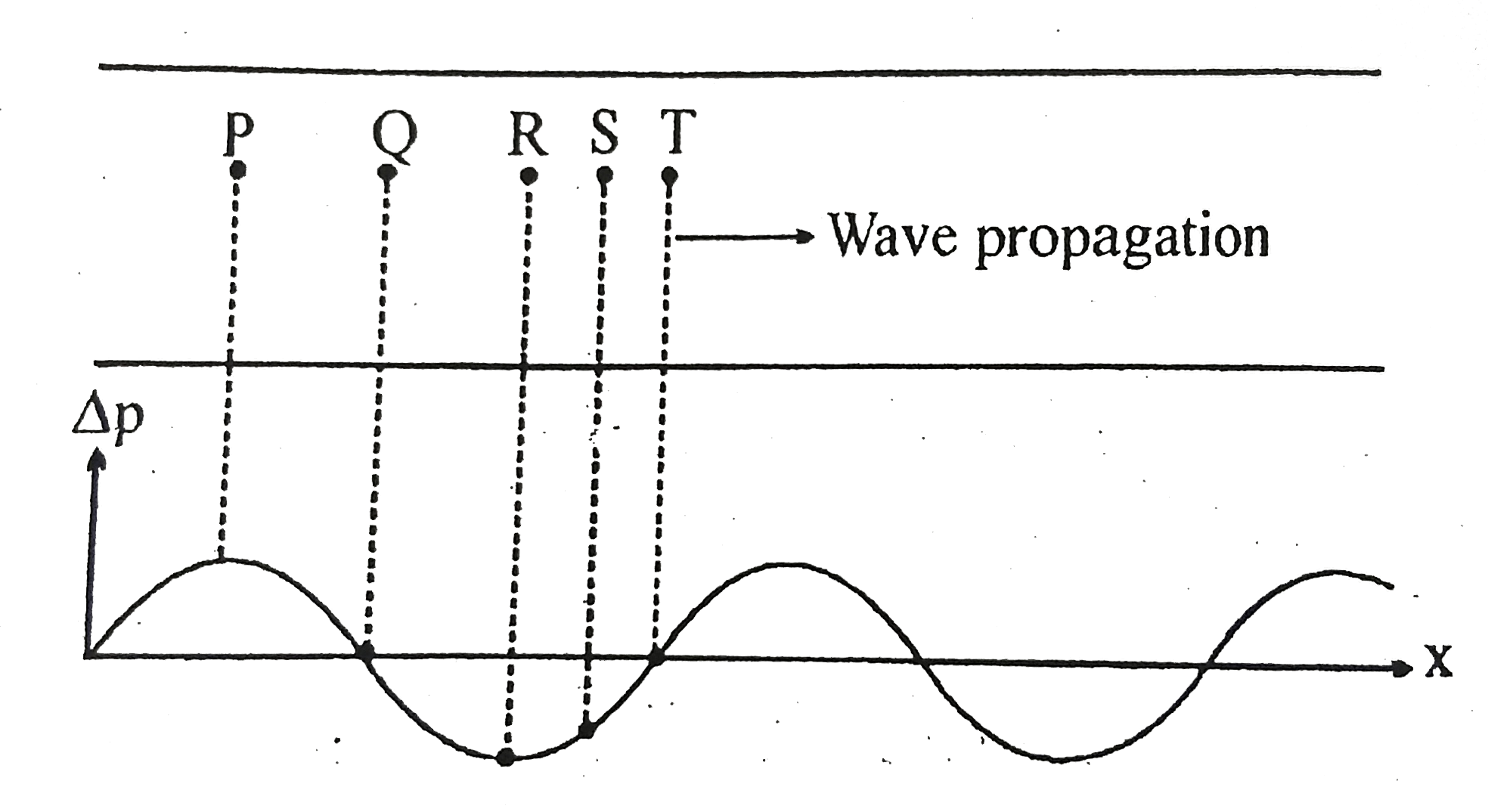In y=Asinωt+Asin(ωt+2π3)
∣∣
∣
∣
∣
∣
∣
∣
∣
∣∣Column-IColumn-II(A)Motion(p)is periodic but no SHM(B)Amplitude(q)is SHM(C)Initial phase(r)A(D)Maximum velocity(s)π/3(t)ωA/2(u)None∣∣
∣
∣
∣
∣
∣
∣
∣
∣∣ Solution in Gujrati
The correct Answer is:A, B, C, D
y=Asinωt+Asinωtcos'2π3+Acosωtsin'2π3
=A2sinωt+A√32cosωt=Asin(ωt+π3)
Topper's Solved these Questions
- SIMPLE HARMONIC MOTIONBOOK - ALLEN CHAPTER - SIMPLE HARMONIC MOTIONEXERCISE - Comprehension #1
3 Videos
- SIMPLE HARMONIC MOTIONBOOK - ALLEN CHAPTER - SIMPLE HARMONIC MOTIONEXERCISE - Comprehension #2
3 Videos
- SIMPLE HARMONIC MOTIONBOOK - ALLEN CHAPTER - SIMPLE HARMONIC MOTIONEXERCISE - MCQ s
8 Videos
- RACEBOOK - ALLEN CHAPTER - RACEEXERCISE - Basic Maths (Wave Motion & Dopplers Effect) (Stationary waves & doppler effect, beats)
25 Videos
- TEST PAPERBOOK - ALLEN CHAPTER - TEST PAPEREXERCISE - PHYSICS
4 Videos
Similar Questions
In a mixture of H−He+ gas (He+is singly ionized He atom), H atom and He+ ions are excited to their respective first excited state. Subsequently H atoms transfer their total excitation energy to He+ ions (by collisions) Assume that the bohr model of atom is exactly valid.
The quantum number n of the state finally populated in He+ inos is -
View SolutionScientists are working hard to develop nuclear fusion reactor Nuclei of heavy hydrogen, _(1)2H , known as deuteron and denoted by D, can be thought of as a candidate for fusion rector . The D−D reaction is _(1)2H+21H→12He+n+ energy. In the core of fusion reactor, a gas of heavy hydrogen of _(1)2H is fully ionized into deuteron nuclei and electrons. This collection of _12H nuclei and electrons is known as plasma . The nuclei move randomly in the reactor core and occasionally come close enough for nuclear fusion to take place. Usually , the temperature in the reactor core are too high and no material will can be used to confine the to plasma for a time t0 before the particles fly away from the core. If n is the density (number volume ) of deuterons , the productnt0is called Lawson number. In one of the criteria , a reactor is termed successful if Lawson number is greater then 5×1014s/cm2
it may be helpfull to use the following boltzmann constant
λ=8.6×10−5eV/k,e24πs0=1.44×10−9eVm
In the core of nucleus fusion reactor , the gas become plasma because of
View SolutionLet mp be the mass of a poton , M1 the mass of a _(10)20Ne nucleus and M2 the mass of a _(20)40Ca nucleus . Then
View SolutionThe frequency of a radar is 780 MHz. After getting reflected from an approaching aeroplane, the apparent frequency is more than the actual frequency by 2.6 kHz. The aeroplane has a speed of
View SolutionChoose the correct statement:
View SolutionThe initial position and velocity of a body moving in SHM with period T=0.25s are x=5.0cm and v=218cm/s. What are the amplitude and phase constant of the motion ?
View SolutionA particle is subjected to SHM as given by equation x_1=Asinomegat and x_2=A_2sin(omegat+(pi)/(3)) . The maximum acceleration and amplitude of the resultant motion are a_(max) and A , respectively Then.
View SolutionSound is travelling in a long tube towards right and the graph of excess pressure variation Vs position (at some instant) is given below.
 Match velocities in column-I with column-II P,Q,R,S,T are medium particles inside the tube.
Match velocities in column-I with column-II P,Q,R,S,T are medium particles inside the tube.
Column-IColumn-II(A)velocity is towards right(P)P(B)velocity is towards left(Q)Q(C)velocity is zero(R)R(D)Speed is maximum(S)S(T)T
View SolutionThe acceleration- time graph of a particle executing SHM along x-axis is shown in figure. Match Column-I with column-II

Column-IColumn-IIPosition of particlePhysical,quantites related with particle's motion(A)At position 1 (p)Kinetic energy is maximum(B)At position 2 qPotential energy is maximum(C)At position 3(r)Displacement of particle is negative(D)At position 4(s)Velocity is maximum
View SolutionMatch Column - I with Column - II

PQRS(A)1243(B)2143(C)4132(D)4321
View SolutionAmplitude of a SHM is, A = 7 cm, its time period, T = 2s and initial phase, alpha=30^(@) . Establish the equation of this SHM.
View SolutionFind the maximum velocity of a SHM particle having amplitude 'A' and periodic time T.
View SolutionMatch Column A with Column B

(A) (P-i), (Q-ii), (R-iv), (S-iii)
(B) (P-ii), (Q-i), (R-iii), (S-iv)
(C) (P-ii), (Q-iii), (R-iv), (S-i)
(D) (P-iv), (Q-iii), (R-ii), (S-i)
View SolutionMatch the following
Column-I Column-IIA) Linear combination of two SHMsP) T=√Rg (R is radius of the earth) B) y=Asinω1t+Asin(ω2t+ϕ)Q) SHM for equal frequencies and amplitude C) Time period of a pendulum of infinite length R) Super position may not always be an SHM D) Maximum value of time period an oscillating pendulumS) Amplitude will be √2Afor ω1=ω2 and phase difference of π2
View SolutionColumn-IColumn-IIA) Motion of needle of sewing machine P) Periodic oscillatory B) Motion of conical pendulum Q) Oscillatory non-eriodic C) Motion of simple pendulum R) Oscillatory, linear simple harmonic D) Motion of suspended loaded spring S) Oscillatory, Non linear SHM pulled and released
View SolutionIn column-l, the projection of a particle moving along a circle (uniformly) in x-y plane with its centre of origin along x and y axes, while in Column-II, the description of particle's motion is given. It is given that particle's angular velocity is constant and equal to ω and the radius of circle is A,δ≠0,π2orπ For this situation match the column-I with column-II
Column - IColumn - IIA) x(t)=Asin(ωt+δ−π2),y(t)=Asin(ωt+δ)P) Uniform circular motion (clockwise)B) x(t)=Asin(ωt+δ),y(t)=Asin(ωt+δ+π2)Q) Uniform circular motion(anti - clockwise)C) x(t)=Asin(ωt),x(t)=Acos(ωt)R) At = 0 particle is neither on x - axis nor on y - axisD) x(t)=Acos(ωt+δ),y(t)=Acos(ωt+δ+π2)S) At t = 0 particle is either on x - axis on y - axis
View Solution
